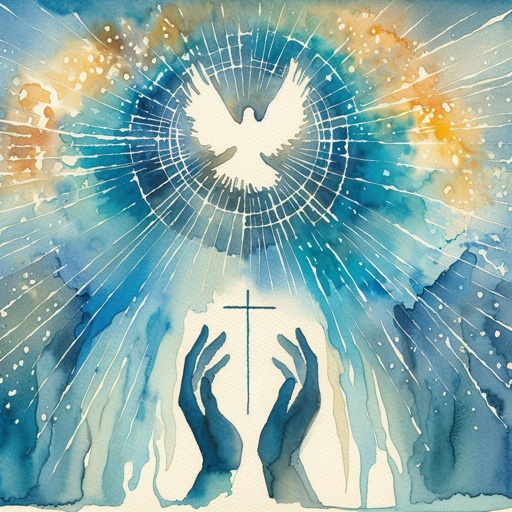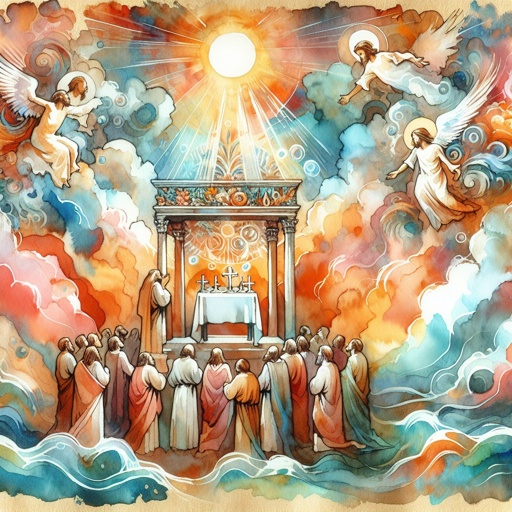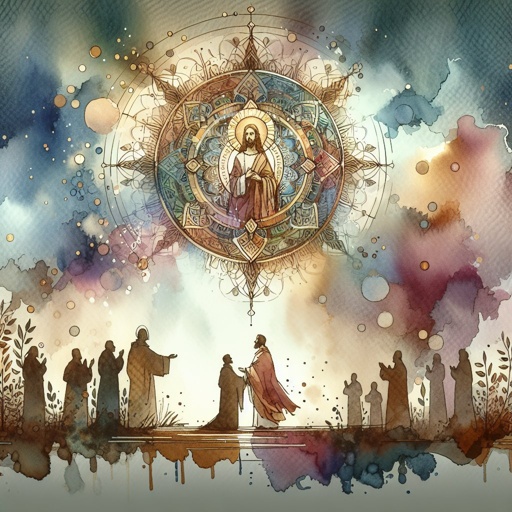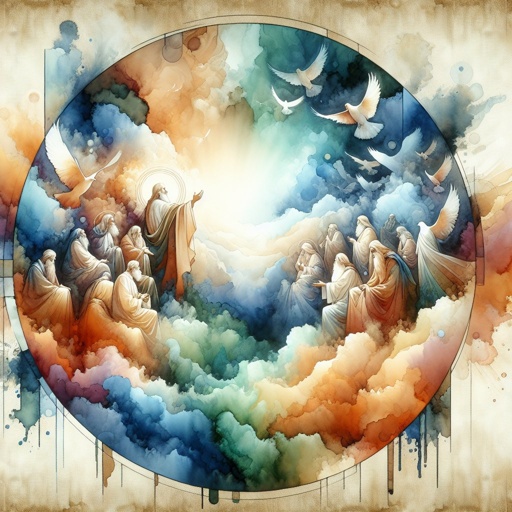What does Psalms 142:1 mean?
"I cried unto the LORD with my voice; with my voice unto the LORD did I make my supplication." - Psalms 142:1

Psalms 142:1 - "I cried unto the LORD with my voice; with my voice unto the LORD did I make my supplication."
The verse Psalms 142:1 from the King James Version of the Bible states: "I cried unto the Lord with my voice; with my voice unto the Lord did I make my supplication." This verse is attributed to David, the author of many of the Psalms, and was written during a time of great distress and suffering. In this verse, David is crying out to the Lord, seeking His help and guidance during a time of trouble.
The theme of this verse is one of faith and trust in God in the midst of suffering. David is not silent in his despair, but rather he vocalizes his cries and supplications to God. This act of calling out to God demonstrates David's reliance on Him and his belief that God is a present and active force in his life. It also shows the depth of David's relationship with God, as he is comfortable expressing his emotions and seeking comfort and support from Him.
The context in which this verse was written is important to consider when interpreting its meaning. According to the heading in the Psalms, David wrote this particular psalm while he was hiding in a cave. He was fleeing from his enemies, who were seeking to capture and harm him. In this desperate situation, David turned to the Lord for help and protection. The cave symbolizes a place of isolation, fear, and danger, and David's cry to the Lord reflects his feelings of vulnerability and desperation.
The symbolism of the voice is also significant in this verse. By crying out to the Lord with his voice, David is not only expressing his inner turmoil, but he is also actively engaging in prayer and communication with God. This act of using his voice to make supplication signifies the power of spoken words in prayer, and the importance of earnestly seeking God's intervention and favor.
Furthermore, the mention of making supplication emphasizes David's humility and dependence on God. He is not demanding or commanding God to act on his behalf, but rather he is earnestly beseeching Him for help and mercy. This demonstrates David's recognition of God's sovereignty and his willingness to submit to His will.
The verse Psalms 142:1 can also serve as an inspiration and model for believers today. In times of distress and trouble, it encourages individuals to turn to God and seek His help through prayer and supplication. It teaches the importance of vocalizing one's struggles and needs to God, and the assurance that He hears and responds to those who call out to Him in faith.
In conclusion, Psalms 142:1 is a powerful and poignant verse that encapsulates the themes of faith, trust, and dependence on God in the midst of suffering. It serves as a reminder of the importance of prayer and vocalizing one's needs to God, and the assurance that He is a present and responsive source of comfort and support. This verse reflects the deep and intimate relationship between David and God, and serves as a source of inspiration and encouragement for believers facing their own trials and challenges.
Psalms 142:1 Artwork

Psalms 142:1 - "I cried unto the LORD with my voice; with my voice unto the LORD did I make my supplication."

Psalms 119:142 - "Thy righteousness is an everlasting righteousness, and thy law is the truth."

Psalms 142:2 - "I poured out my complaint before him; I shewed before him my trouble."

Psalms 142:5 - "I cried unto thee, O LORD: I said, Thou art my refuge and my portion in the land of the living."

Psalms 142:6 - "Attend unto my cry; for I am brought very low: deliver me from my persecutors; for they are stronger than I."

Psalms 142:4 - "I looked on my right hand, and beheld, but there was no man that would know me: refuge failed me; no man cared for my soul."

Psalms 142:7 - "Bring my soul out of prison, that I may praise thy name: the righteous shall compass me about; for thou shalt deal bountifully with me."

Psalms 128:1 - "Blessed is every one that feareth the LORD; that walketh in his ways."

Psalms 122:1 - "I was glad when they said unto me, Let us go into the house of the LORD."

Psalms 64:1 - "Hear my voice, O God, in my prayer: preserve my life from fear of the enemy."

Psalms 55:1 - "Give ear to my prayer, O God; and hide not thyself from my supplication."

Psalms 9:1-2

Psalms 92:1 - "It is a good thing to give thanks unto the LORD, and to sing praises unto thy name, O most High:"

Psalms 108:1 - "O God, my heart is fixed; I will sing and give praise, even with my glory."

Psalms 145

Psalms 145

Psalm 95:1-2 - "O come, let us sing unto the Lord: let us make a joyful noise to the rock of our salvation. Let us come before his presence with thanksgiving, and make a joyful noise unto him with psalms."

Psalms 87:1 - "His foundation is in the holy mountains."

Psalms 145

Psalm 32:1-2 - "Blessed is the one whose transgressions are forgiven, whose sins are covered. Blessed is the one whose sin the Lord does not count against them and in whose spirit is no deceit."

Psalms 145

Psalms 23:1 - "The LORD is my shepherd; I shall not want."

Psalms 132:1 - "LORD, remember David, and all his afflictions:"

Psalms 145

Psalms 146:1 - "Praise ye the LORD. Praise the LORD, O my soul."

Psalms 119:1 - "Blessed are the undefiled in the way, who walk in the law of the LORD."

Psalms 84:1 - "How amiable are thy tabernacles, O LORD of hosts!"

Psalms 109:1 - "Hold not thy peace, O God of my praise;"

Psalms 18:1 - "I will love thee, O LORD, my strength."

Psalms 76:1 - "In Judah is God known: his name is great in Israel."